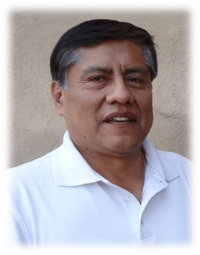Indian Country tourism group praises Chickasaw Cultural Center

This article appeared in the March 2020 edition of the Chickasaw Times
SULPHUR, Okla. - A leader of the country’s top organization dedicated to advancing tourism in Indian Country says the Chickasaw Cultural Center serves as a great example of a tribe sharing its own story.
Emerson Vallo, president of the Southwest Region for the American Indian Alaska Native Tourism Association (AIANTA), recently visited the Chickasaw Cultural Center in Sulphur. He was accompanied by two dozen AIANTA members. The group’s tour was part of the AIANTA Tourism Conference, conducted in Tulsa last fall.
Mr. Vallo, Acoma Pueblo, said he was fascinated by the design of the facility. The story of the vision and decades of planning by Chickasaw people to build the Cultural Center, he said, was impressive.
The Chickasaw Cultural Center opened in 2010 after more than 20 years planning. It serves as a cultural home and an embodiment of Chickasaw history and culture.
“I had never seen a center like that,” Mr. Vallo said. “It is very well designed. The setting was great. The whole structure was impressive, and the story behind the facility was very interesting.”
He particularly enjoyed the Stomp Dance demonstration, including the explanation of traditional regalia and the significance of Stomp Dance to Chickasaw people. He also enjoyed the Spirit Forest in the Chikasha Poya Exhibit Center.
Taking in the sites of the Chikasha Inchokka Traditional Village and nearby Chickasaw National Recreation Area from atop the 40-foot Aba’ Aanowa’ Sky Pavilion was also among Mr. Vallo’s favorite features at the Cultural Center.
He stressed the importance of all tribes establishing facilities like the Chickasaw Cultural Center. Tribes, he said, should be the first voice to share their story.
“Instead of someone telling their story, they themselves can tell their own story, and tribal members working in these facilities adds to the authenticity and experience,” he said. “It’s a good way to promote one’s own tribe, to enlighten visitors and to share who we are as native people by telling our own story.”
There has been an uptick, Mr. Vallo said, in tribes establishing cultural centers or museums across the country.
“More tribes are now seeing the advantages of having a cultural center or museum, so that they do their own interpretation of their own people and impart that on the tourist,” he said. “They also see the benefits – tourism dollars – coming into the tribes. And it also provides opportunities for tribal members to work for their own tribe.”
Tribal facilities like the Chickasaw Cultural Center, he said, and his own tribe’s Sky City Cultural Center and Haak’u Museum, near Albuquerque, have opportunities to serve as examples for other tribes.
“We have a pretty good story on how the design of the facility was created, and it may produce a case study for other tribes interested in establishing those types of facilities,” he said. “They can do the research and get an idea of how to develop such a facility.”
Mr. Vallo has served on the AIANTA board of directors for six years. He was elected board president in 2019. He was appointed to the New Mexico Tourism Department as a Commissioner by former Governor Susana Martinez and is the Native American representative for tourism in the state of New Mexico. He has served as Chairman of the board of directors for Acoma Business Enterprises, Chairman of the board of trustees, Haak’u Museum and Director for Sky City Cultural Center and Museum.
About the American Indian Alaska Native Tourism Association
The American Indian Alaska Native Tourism Association (AIANTA) is a national nonprofit association of tribes, tribal businesses and entrepreneurs who promote leadership in education, training and technical assistance for Indian Country tourism. AIANTA’s mission is to define, introduce, grow and sustain American Indian and Alaska Native tourism that honors and sustains tribal traditions and values.